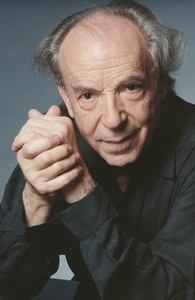
Martha Argerich |
Martha Argerich

The general public and the press started talking about the extraordinary talent of the Argentine pianist in 1965, after her triumphant victory at the Chopin Competition in Warsaw. Few people knew that by this time she was by no means a “green newcomer”, but on the contrary, she managed to go through an eventful and rather difficult path of becoming.
The beginning of this path was marked in 1957 by victories at two very significant international competitions at once – the name of Busoni in Bolzano and Geneva. Even then, the 16-year-old pianist attracted with her charm, artistic freedom, bright musicality – in a word, with everything that a young talent is “supposed” to have. In addition to this, Argerich received good professional training back in her homeland under the guidance of the best Argentinean teachers V. Scaramuzza and F. Amicarelli. Having made her debut in Buenos Aires with performances of Mozart’s concertos (C minor) and Beethoven’s (C major), she went to Europe, studied in Austria and Switzerland with leading teachers and concert artists – F. Gulda, N. Magalov.
- Piano music in the Ozon online store →
Meanwhile, the very first performances of the pianist after the competitions in Bolzano and Geneva showed that her talent had not yet been fully formed (and could it be otherwise at the age of 16?); her interpretations were not always justified, and the game suffered from unevenness. Perhaps that is why, and also because the educators of the young artist were in no hurry to exploit her talent, Argerich did not receive wide popularity at that time. The age of the child prodigy was over, but she continued to take lessons: she went to Austria to Bruno Seidlhofer, to Belgium to Stefan Askinase, to Italy to Arturo Benedetti Michelangeli, even to Vladimir Horowitz in the USA. Either there were too many teachers, or the time for the flowering of talent did not come, but the process of formation dragged on. The first disc with the recording of works by Brahms and Chopin did not live up to expectations either. But then came 1965 – the year of the competition in Warsaw, where she received not only the highest award, but also most of the additional prizes – for the best performance of mazurkas, waltzes, etc.
It was this year that turned out to be a milestone in the creative biography of the pianist. She immediately stood on a par with the most famous representatives of artistic youth, began to tour widely, record. In 1968, Soviet listeners were able to make sure that her fame was not born of a sensation and was not exaggerated, based not only on a phenomenal technique that allows her to easily solve any interpretive problems – whether in the music of Liszt, Chopin or Prokofiev. Many remembered that in 1963 Argerich had already come to the USSR, only not as a soloist, but as a partner of Ruggiero Ricci and showed herself to be an excellent ensemble player. But now we had a real artist in front of us.
“Martha Argerich is indeed an excellent musician. She has a brilliant technique, virtuoso in the highest sense of the word, perfected pianistic skills, an amazing sense of form and architectonics of a piece of music. But most importantly, the pianist has a rare gift to breathe a lively and direct feeling into the work she performs: her lyrics are warm and peaceful, in pathos there is no touch of excessive exaltation – only spiritual elation. A fiery, romantic beginning is one of the most distinctive features of Argerich’s art. The pianist clearly gravitates towards works full of dramatic contrasts, lyrical impulses… The young pianist’s sound skills are remarkable. The sound, its sensual beauty, is by no means an end in itself for her.” So wrote the then young Moscow critic Nikolai Tanaev, after listening to a program in which the works of Schumann, Chopin, Liszt, Ravel and Prokofiev were performed.
Now Martha Argerich is rightfully included in the pianistic “elite” of our days. Her art is serious and deep, but at the same time charming and young, her repertoire is consistently expanding. It is still based on the works of romantic composers, but along with them, Bach and Scarlatti, Beethoven and Tchaikovsky, Prokofiev and Bartok occupy a full-fledged place in its programs. Argerich does not record much, but each of her recordings is a serious thoughtful work, testifying to the constant search for the artist, her creative growth. Her interpretations are still often striking in their unexpectedness, much in her art has not “settled” even today, but such unpredictability only increases the attractiveness of her game. The English critic B. Morrison outlined the artist’s current appearance as follows: “Sometimes Argerich’s performance seems often impulsive, her legendary technique is used to achieve annoyingly sloppy effects, but when she is at her best, there can be no doubt that you are listening to an artist whose intuition is so as remarkable as her well-known fluency and ease.
Grigoriev L., Platek Ya., 1990





